If we picture Australia’s National Electricity Market as a 5-legged stool, various stakeholders have perceived different problems with at least three wobbly legs (QLD, SA and TAS) over this extended summer period.
I apologize to those WattClarity readers who have been asking for our comment on each of these regions. Guest author Mike Williams has commented on both South Australia (here and here) and Queensland (here), whilst I do endeavour to put together my own perspectives when time allows.
(This week, in spurts,) I’ve tried to recap the situation in Tasmania. It’s a region where I expect there will be a few white knuckles, getting whiter by the day, with the evolving dilemma about ongoing electricity supplies.
We’ve grown sadly accustomed to seeing our NEM-Watch dashboards looking something like the following over far too many weeks:
I’ve annotated the image to draw attention to a number of the significant developments – some are discussed below (as much as time has allowed).
1) Factors at play in the crisis
A number of variables are contributing to, or arising from, the current crisis in Tasmania. Here are some of them:
1a) Basslink cable fault
On 22nd December 2015, notice was provided (by Hydro Tasmania and Basslink and AEMO) of a fault in the Basslink cable. This fault occurred mid-afternoon on Sunday 20th December.
Since that time we’ve seen the following updates:
20th Dec 2015 Fault occurred at 15:03 AEDT, according to the AEMO notice linked above. This note also states:
”At the time of the incident, approximately 254 megawatts from four large industrial customers within Tasmania were disconnected under the Frequency Control Special Protection Scheme, which protects the broader Tasmanian network. This load was restored within 30 minutes”
That loss of load was a temporary glitch, and one that is understandable given the size of the link relative to the size of the load in the region.
Something to keep in mind moving forwards as the generation mix changes across the NEM as a result of changing technological, economic and social drivers – especially if dependence on major transmission lines increases.
22nd Dec 2015 Notice of fault (as above) 14th January Basslink provided this notice identifying the steps that had already been taken to locate the fault. At that time, a return-to-service date of 19th March was estimated, as a result of which AEMO noted no forecast electricity supply shortfalls.
27th January Basslink noted the initial cable inspection did not reveal obvious impact damage. 12th February Basslink noted the difficulty in pin-pointing the location of the fault. 25th February Basslink reported here that there appears to be no external impact damage visible. 8th March 2016 Basslink provided this media statement outlining that a milestone in the repair process had been reached, with the likely site of the damage found and hence a decision made to cut the cable. One the same day the AFR notes that this probably means the crisis will continue till at least June.
The Australian, on the other hand, is not so sure on an end date.
Prior to the fault developing we see (in the annotated image of daily flows over Basslink produced in NEM-Review) that Basslink had been running pretty much flat-out from 1st October 2015, sending power from the mainland south over the interconnector into Tasmania until the time at which all flow ceased with the fault:
With winter being the typical inflow period in Tasmania, it’s understandable that there would be more exports (shown in green) through winter but winding down through September – notwithstanding the questions (below) about whether it would not have been more prudent to keep storages at a higher level.
1b) Hydro storage levels drop
Hydro storage levels were low prior to the outage of Basslink (which is why Basslink flows were running hard south for months beforehand). Without Basslink, then, they are plunging faster – with the NEM-Watch image above showing them at 17% rounded to the nearest whole number.
On 3rd March I noted this article in the AFR “Hydro Tasmania: big users ask why it sold power to mainland ahead of crisis” that contains (for those who can access AFR online or have access to the print issue on the day) a good image showing 10 years of hydro output and rainfall. I don’t have time to re-create a similar one here with our internal records so would refer readers to that one.
In response, I noted several references (including this one on 1st March in the Australian) about an early-start to cloud seeding operations to try to promote more rain. An additional cost of $100,000 is noted.
1c) An unwelcome form of Demand Response
It’s been noted in various media outlets that the biggest energy users are helping to conserve precious water supplies by agreeing to some substantial reductions in electricity consumption.
The Premier, in this statement yesterday, notes:
“Through Hydro Tasmania, we have continued discussions with each of the major energy users. A number of our major energy users have presented commercial proposals to Hydro Tasmania for load reduction to assist in managing the situation and several have now been agreed to
Hydro Tasmania has also agreed to commercial terms with a number of major industrials for voluntary load reductions. The total load reduction as of the 7March 2016 was equivalent to 115 MW (noting that it will peak at approximately 150 MW during the week of the Norske Skog paper machine shut down). We are advised that these reductions will not impact permanent jobs at these companies and will not jeopardise the long term variability of these businesses in Tasmania.”
Examples I have seen in the press include:
(i) The Bell Bay Aluminium Smelter is reported to have reduced its output by 32-40MW (agreement noted on 4th February by Hydro Tasmania and Bell Bay Aluminium along with the Premier) and more recently (7th March) reported here as even facing closure (and hence job losses) if the crisis worsens.
(ii) Separately it was noted that the Tasmanian Electro Metallurgical Company (TEMCO) had also agreed to voluntarily reduce a component of its electricity demand – on 14th January in the Examiner it was reported as 30MW (note that this will be a factor – though not the only one – in the job losses flagged in articles such as this in the ABC on 17th February).
(iii) On 1st March Hydro Tasmania noted that Norske Skog had agreed to reduce its consumption by approximately 43MW at its Boyer Paper Mill.
(iv) I did see some press mentions of the zinc plant in Hobart operated by Nyrstar, but can’t find them currently.
(v) It is likely that there are others who have also been tapped on the shoulder to ramp back consumption – though this would quickly become a matter of diminishing returns given the relative size of other energy users.
I’ve used our NEM-Review software to compose this comparison of average Daily demand levels in Tasmania over a number of “extended summer” periods (December-March):
As we can see, the effect of the longer-term demand response evident with the large energy users scaling back operations in the past couple of weeks – though I do note that this appears to have started happening from 1st March – a little later than I had inferred from the announcements above.
It’s also showing a reduction in Scheduled Demand that is higher than expected, given the announced curtailments above. My suspicion is that this is due to the operation of the first of the bunch of small, distributed diesel generators operating “behind the meter” to lower Scheduled Demand (in the same way as I noted yesterday how small-scale solar PV works). This article from 7th March in the Australian (saying that some of these small plants are operating this week) seems to corroborate my suspicion.
With respect to electricity consumption in Tasmania, readers should keep this prior analysis (including Shaun’s comment at the bottom) in mind in attribution of differences in demand from year-to-year.
1d) Restart of Bell Bay Gas Plant
As noted at numerous places in the media, one of the steps taken to keep the lights on in Tasmania has been to re-start operations at the Tamar Valley site in the north of the state.
With the assistance of NEM-Review, I’ve put this longer-term trend together so readers can understand the history of fossil-fuelled generation on the Bell Bay & Tamar Valley sites:
As noted in the chart, I’d posted (here and then here) in October 2013 about a hiatus at operations at Tamar Valley which, as we can see from the chart, returned to service from December 2013 through till May 2014 before turning off more “permanently”.
As an interesting and very topical footnote, I see in this release from the Premier that “the Government has withdrawn the approval given to Hydro Tasmania to seek expressions of interest for the sale of the CCGT. That sale is now completely off the table.”
The Premier also notes that the Rolls Royce “Trent” unit (in Tamar Valley Peaker) is expected to be ready for service by April.
1e) Fast-track installation of Diesel Generators
There have been several updates from Hydro Tasmania (and hence echoed elsewhere in the media) about the plans to install 200MW of diesel generators in the state.
(i) This note on 29th January indicated that the first 24MW being delivered.
(ii) This note indicated that the expectation (on 15th February) was that 100MW would be operational by the end of March whilst another 100MW would be in place by the end of April.
In line with this we’ve fielded a number of calls wondering whether viewers would be able to see the output of these gensets added into our NEM-Watch Widget (sponsored by RenewEconomy, and showing up at an increasing number of places across the web).
We’d very much like this to be the case, but it depends on whether AEMO publishes metered generation data from the plant. It may be that, in the rush to get them installed, it is not possible to have that data published into the Market Management System in time (there are numerous small-scale generators which AEMO only “sees” as netting off Scheduled Demand – hence this is a possible, indeed likely, scenario for these ones as well).
1f) Solar boost considered, but apparently discounted?
With it clearly being a position in which any megawatt is a necessary megawatt with the supply/demand balance severely strained it was not a surprise to read that the possibility of another round of solar incentives, in the form of a feed-in-tariff, is being considered.
However yesterday’s article seemed to imply that this idea was not going to fly.
1g) Another interconnection link to the mainland
I remember seeing this one around over a longer period of time in different guises.
For instance, it was included as a component of the hypothetical “NEMLink” concept in the AEMO’s 2010 issue of the National Transmission Network Development Plan (NTNDP), as shown in the illustration here:
More recently, the plan was (I believe) to run the cable only 1/2 as far (in approximate terms) and connect King Island to Victoria and not to Tasmania to support the “TasWind” project. I believe that the logic was that the storage potential in the Tasmanian hydro systems would make it unnecessary to pay for a link twice as long (i.e. connect Tasmania to King Island).
I noted this article in the Oz “Tasmania seeks federal funds for second Bass Strait Link”, back on 11th Feb, claiming that the state was planning to ask Canberra for a $1b contribution towards getting a second link up and running.
It’s no surprise that this possibility is being discussed in the current heat of the moment. It’s more uncertain how serious these discussions will be when the crisis is over and the true cost is known, weighted by probability, and compared to the cost of building a duplicate line.
PS on 10th March = One of our readers has pointed us to this article from 7th March in the Advocate “Energy crisis fuels push for wind farm” as something that will interest some of our readers.
1h) Higher prices (for all?)
This crisis is having a cost.
The NEM-Watch snapshot above shows spot price in Tasmania up at $235/MWh for the five-minute dispatch interval captured in the snapshot, but this has not been unusual (the average price for Q1, thus far, is currently sitting above $150/MWh).
In this article, the AFR notes claims that the crisis will cost $100M for the Tasmanian economy. I’m not sure where that number came from (but if we assume an uplift on spot prices of $100/MWh above “normal” multiplied by average consumption of 1000MW across Q1, this equates to $216M added wholesale cost).
Whatever the number, it’s big.
The Premier noted on Tuesday that the Government is marking down the expected dividend from Hydro Tasmania on the assumption that increased costs of electricity supply won’t be fully recovered from energy users (though the notice did not say by how much).
It seems likely that no-one can know, now, with the crisis still unfolding – and with the return of Basslink, and the return of rains, both a little uncertain.
What does seem certain is that there will be cost impacts for a number of Tasmanians.
One of our friends in Tasmania, Marc White of Goanna Energy Consulting, is quoted here as noting that an irrigator client of theirs has paid 35% (or $50,000) more per year under a new contract – though details were not provided as to how much of this has been due to the crisis, and how much due to other (pre-existing) factors.
2) Finger pointing underway
Many will understand that the vast majority of people with a direct role to play in electricity supply throughout Tasmania are knuckling down to do what they can to keep the lights on, and reduce the extent and duration of the crisis.
The time for performing retrospectives will come later, when Basslink is back online (and hopefully it has rained). However that has not stopped the finger pointing exercise from starting already.
2a) About Basslink, the Manufacturers, and the cable
As much as I can tell from the reading that I have done, there’s still no cause known for the outage – i.e. it does not seem like it was something external (e.g. like a wayward ship anchor, or the like), but it’s still uncertain as to what the cause was.
Given this, it’s not possible to know what will ensue in terms of allocating responsibility (or some might wish to apportion blame).
2b) About Hydro Tasmania and storage levels
In the interests of completeness, I have listed two areas in which questions will probably be asked when the finger pointing really gets underway:
(i) Did the bonus revenue occurring during the 24 months of the Carbon Tax skew hydro management?
The carbon tax started in July 2012 and ran through until June 2014. During this time, Hydro Tasmania effectively earned what some might see as “windfall profits” from having its zero-carbon commodity valued more highly, in relative terms, without seeing any adjustment on the cost side of the P&L.
I posted about this back in July 2012 in the early days of the carbon tax (though note that output levels then were also influenced – significantly – by problems at Yallourn) and I think I probably commented about this late in 2014, when the effects were starting to wind off.
This article on 11th February in the Australian included this argument.
On 3rd March, I saw that the AFR included this article “Hydro Tasmania and the Apple Isle’s energy crisis” – in which I particularly noted Brian Morris’ comments on this question. The article notes:
“Some say this weakened Tasmania’s energy security. Morris says it was a rational strategy, and the dams were still about a third full – the long-term average – at the end.”
Brian is head-honcho of the Energy & Sustainability unit at Schneider Electric and is currently also moonlighting as Chairman of the Energy Users Association of Australia.
(ii) Should management of the hydro reserve have been more conservative during winter 2015?
I’ve also seen questions raised about whether Tasmania’s hydro reserves should have been more conservatively managed in the months leading up to the outage of Basslink.
For instance on 3rd March I noted this article in the AFR “Hydro Tasmania: big users ask why it sold power to mainland ahead of crisis” outlining concerns some have expressed about why Basslink was not used more consistently through 2015 to import power into Tasmania and so conserve (much more precious, now) hydro reserves.
In hindsight, it is always easier for us to say that such an approach should have been taken – as we’re in the midst of a deterministic scenario today (i.e. we know that Basslink is out). Putting ourselves back in the picture of 6 or 12 months ago, it was a probabilistic scenario instead (i.e. and one with an assessed low probability that Basslink might have had an outage, a reasonable assumption given the history of the link).
When the dust settles, people might re-consider the probability assumed for such an event – and/or the risk ascribed to high consequence, but low probability events.
2c) About the Energy Adequacy Projections
Another interesting question is the extent to which such a possibility (albeit low probability) might have been flagged in the AEMO’s “Energy Adequacy Projection (EAAP)” publications.
My recollection is that the requirement for these was introduced following the more widespread drought of 2007 and had been updated on a 3-monthly basis since that time – I note that the most recent update (December 2015) contains the following:
“The December 2015 EAAP highlights:
- Current hydro storage levels in Tasmania are low (26% as at December 2015). Despite this, there is enough storage, local wind generation and import capacity available from Victoria to cover forecast electricity consumption if the current El Niño conditions do not dissipate over the first quarter of 2016.
- Hydro inflows used in the EAAP cover drought conditions until the onset of anticipated seasonal rainfall. This is consistent with Bureau of Meteorology (BoM) predictions that the current El Niño event that has lowered hydro storage, is expected to peak January 2016, and is then forecast to decline through the first quarter of 2016 .
- As a response to the El Niño, Hydro Tasmania is conserving its hydro storage, and so the state has been relying more on imported energy via Basslink to meet its electricity needs5 . On 17 December, Hydro Tasmania committed to returning 208 MW of gas-fired generation to service in Tasmania in January 2016, providing alternative energy supplies for the state.
- On 20 December 2015, a fault on Basslink resulted in the separation of Tasmania from the rest of the NEM. At the time this report was published, the expected return to service date for Basslink was unknown. AEMO has assessed energy supply adequacy (including a scenario where Basslink remains out of service for the entire summer 2016 period) and projects sufficient energy supplies in both Tasmania and Victoria. ”
As much as I could tell in only a quick scan, the report does not seem to consider what would unfold if Basslink were to be out for a longer period.
Given that the outage has occurred (hence is top of mind for many), it does raise questions about what might be done to identify other (low-probability but high-consequence) risk scenarios in future as the distribution of generation plant changes under various low-carbon generation options.
2d) About the Government and Generation Options
On this point there’s the possibility (or likelihood) of finger pointing in both temporal directions – both
(i) in terms of what should have been done in the past to better equip Tasmania to weather a crisis like this (pardon the pun), and
(ii) what should be done in the future (especially on the assumption that rainfall patterns are systemically changing as part of a changed climate).
Who will the fingers be pointed at – the Government, Hydro Tasmania (as the only generator) or “the Market”?
Yesterday I noted this article on RenewEconomy referencing this statement from the Premier talking about steps being looked at to increase fossil fuel back-up generation.
PS on 10th March = I note that Jack Gilding of the Tasmanian Renewable Energy Alliance has (today) provided these comments here.
3) Looking forward to learning more on Tuesday 22nd March in Hobart
The Energy User’s Association of Australia is hosting a morning session on the Tassie energy system in Hobart on Tuesday 22nd Hobart. I would expect that, with the dramas unfolding in Tasmania, it will be very well attended.
I am certainly looking forward to learning more (no promises about having the time to post any more on WattClarity afterwards, however).


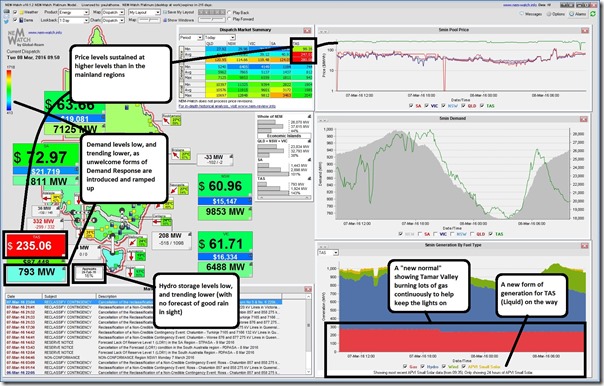
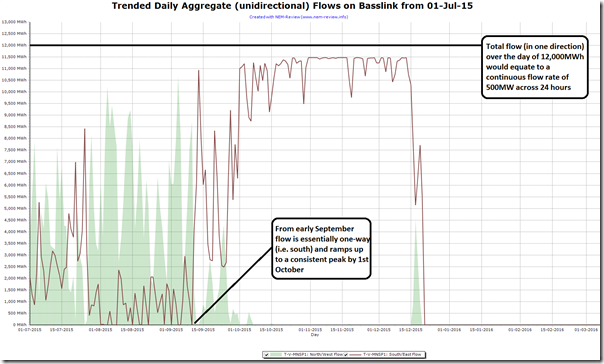
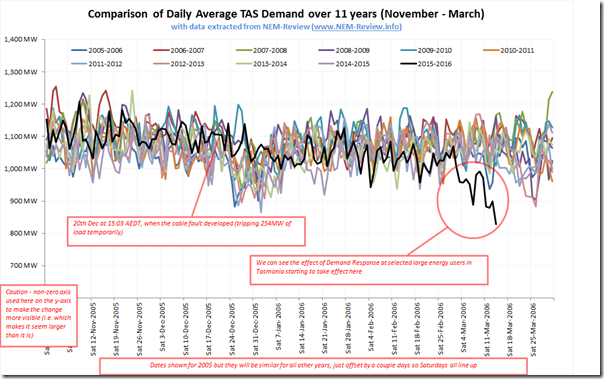
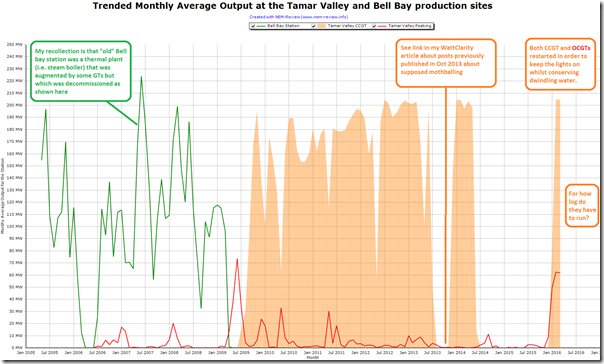
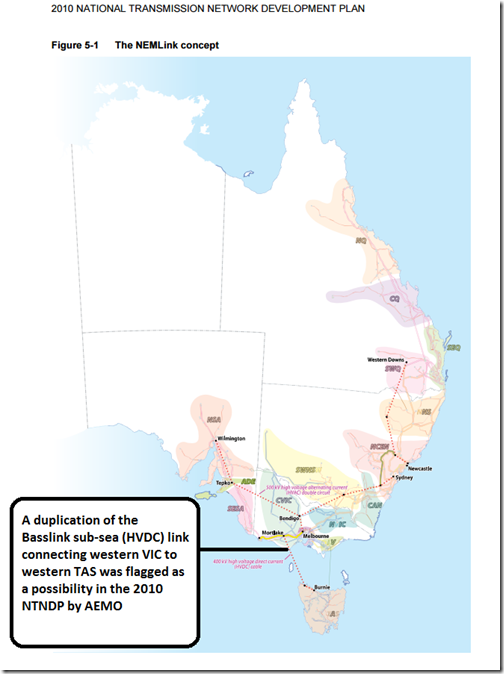
The Catagunya diesel “power station” has been registered with AEMO so production data will be available via the normal means from AEMO.
Thanks Shaun
Will have a look – does not necessarily mean there will be data published – but, if it is, will be fed through to:
1) The NEM-watch Widget (http://reneweconomy.com.au/nem-watch)
2) The new (internationally focused) LiveGen Widget (http://data.reneweconomy.com/LiveGen)
3) The full NEM-Watch product (http://www.NEM-Watch.info)
4) NEM-Review, for historical analysis (http://www.NEM-Review.info); and
5) Other products we have
Regards
Paul
Data is being published for the Catagunya site now “CATAGUN1” is what you’re looking for.
Thanks Shaun
Data is being shown under “Liquid” in the NEM-Watch Widget located here, and a growing number of other places:
http://reneweconomy.com.au/nem-watch
Paul
Hydro Tasmania must have been under a lot of pressure from the Tasmanian government to produce short-term dividends rather than let the dams fill up. With the Gordon Dam so far below its maximum head, each unit of flow is generating much less power than normal. To operate at its maximum rather than its current head would be equivalent of another 120 MW wind farm, with no additional capital or operating costs.
It is understandable that the big users who have been asked to cut demand would take a hard-nosed bargaining position. Hydro was willing to take short term profits at the expense of the longer term security of supply, so why should the large consumers forgo profits too ? Perhaps they have agreed to short term reductions in return for extension of their low power purchase prices.
Thanks Malcolm
Whilst there are anecdotal claims by a number of people along the lines of:
I’m not sure there is anything on the record we can point to about that?
Paul
Hi Paul, thanks for a well-researched summary of the current Tas energy situation.
It may be worth noting the environmental consequences of the requirement to draw the storages down so low and keep them there – many are now below the environmental risk thresholds developed by HT itself and may be sufficient to cause long-term ecological changes. Do you know if the environmental flow for the Gordon River (world heritage area) is still being delivered with Lake Gordon storage levels so low?
Lower output per cumec at low levels increases the costs, as well as potentially damaging turbines as sediment loads increase. Nail-biting times for HT, the Government, industry, the Tas population and some of Australia’s most beautiful places.
Hi Paul,
Thanks for the article, i have been looking at the Moyle connector between scotland and northern island. Installed in 2002, it has been running at half power since 2012, due to repeated problems in the polyethylene insulator for the return layer, see here for example:
https://www.sell2wales.gov.wales/search/show/search_view.aspx?ID=JUN037964
http://www.bbc.com/news/uk-northern-ireland-16434031
http://www.bbc.com/news/uk-northern-ireland-21277249
http://www.4coffshore.com/windfarms/interconnector-moyle-icid20.html
It looks like now they have had to lay a new separate return layer now to try and get cable working again to full capacity.
Any comment for above relative to basslink? ie is it same technology, both have a fault date 10 years after entering service and a similar looking fault type.